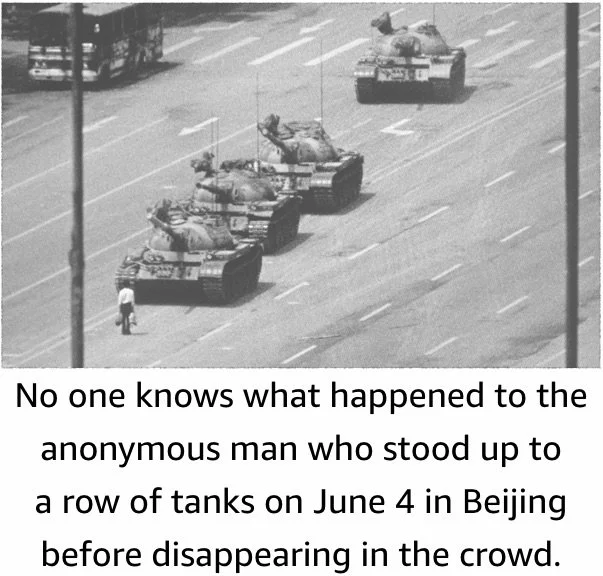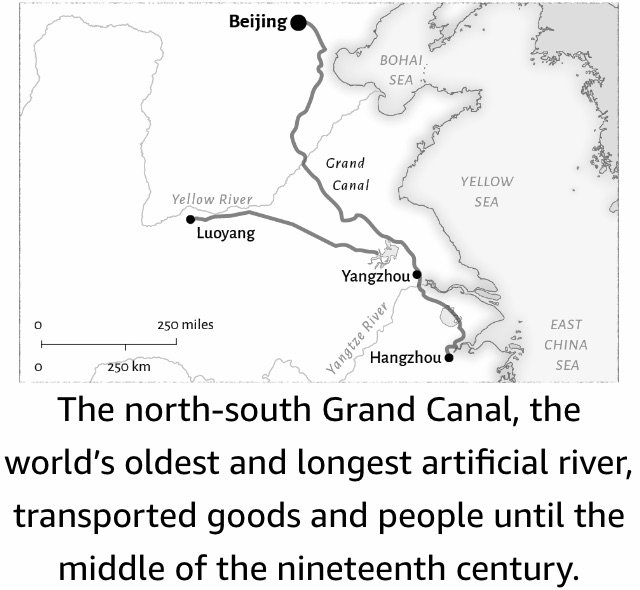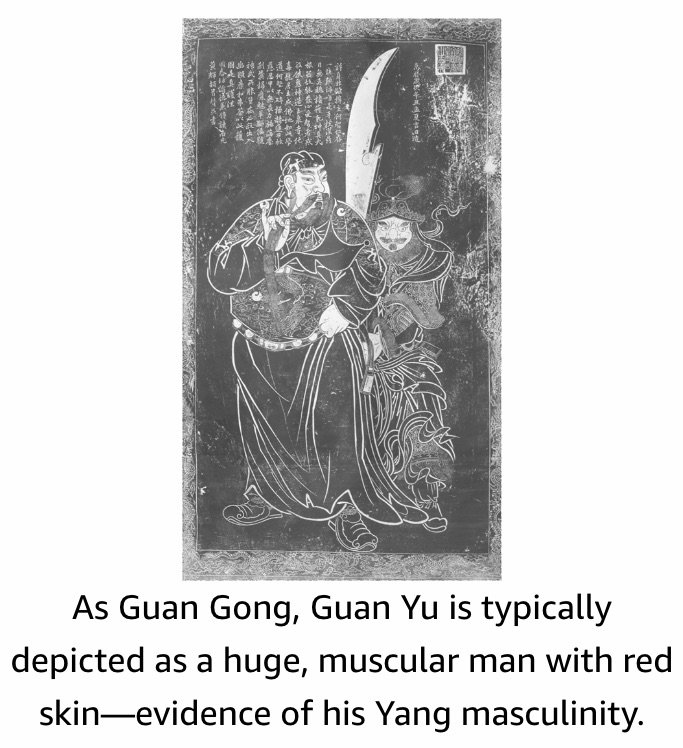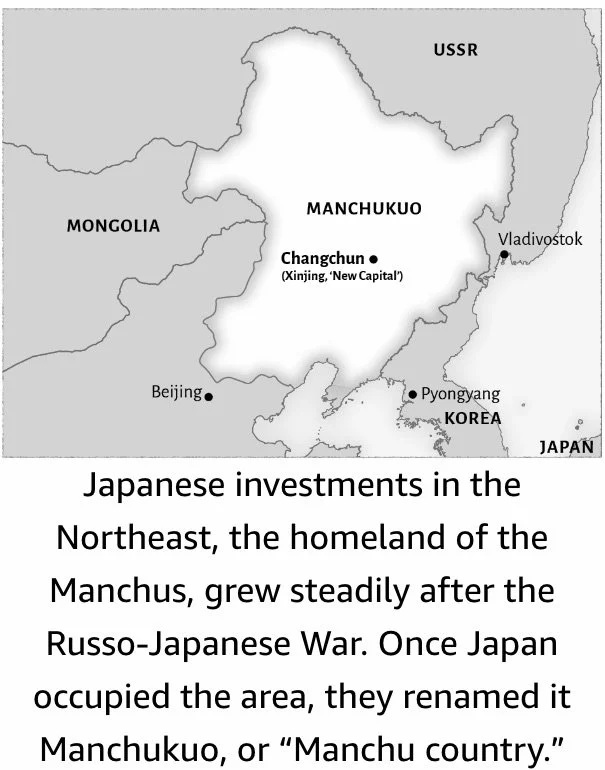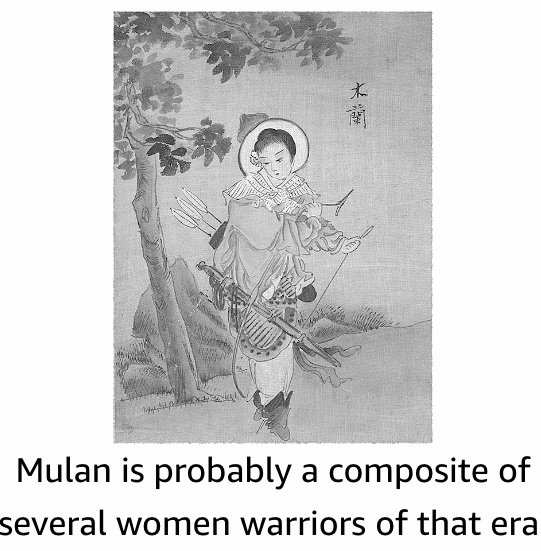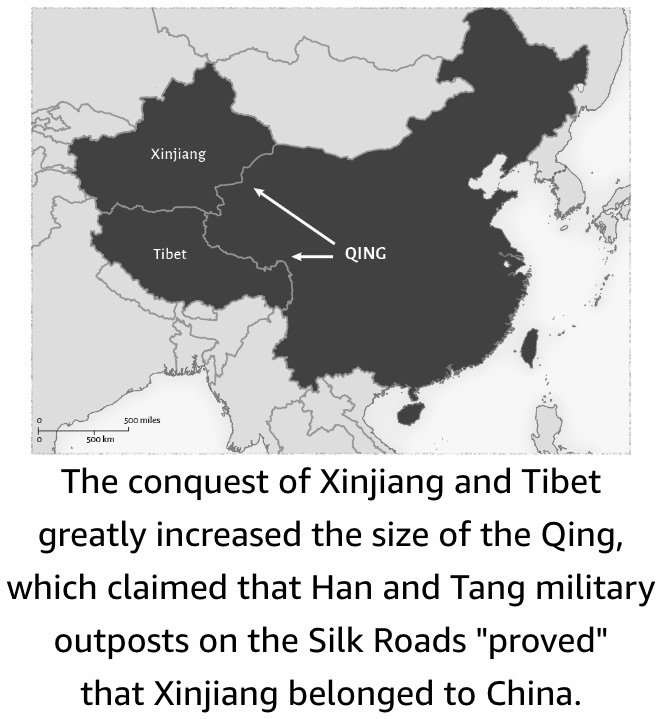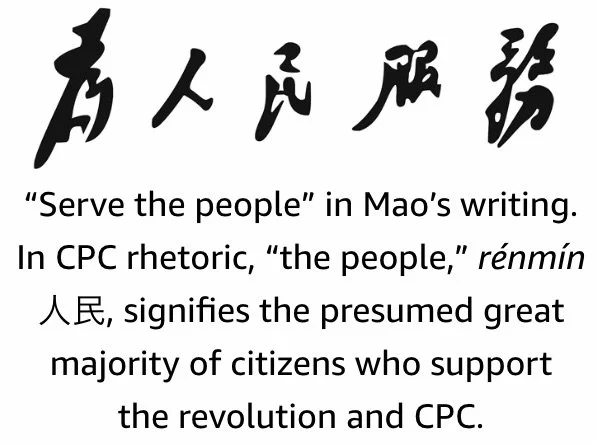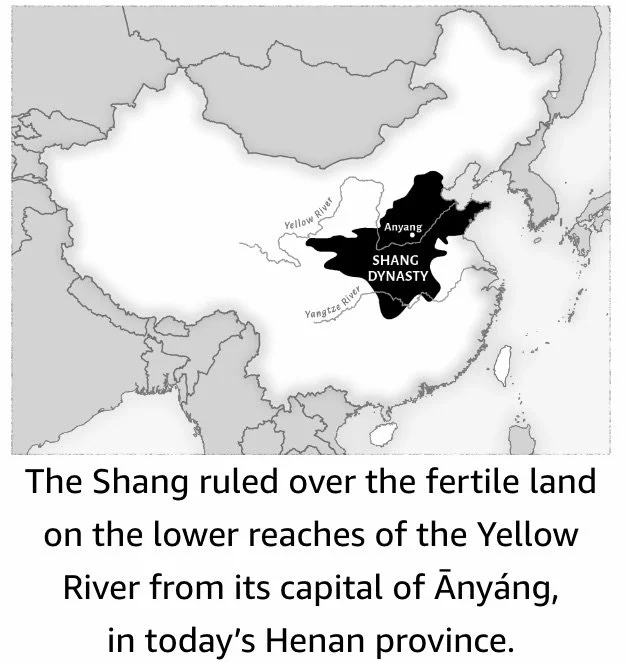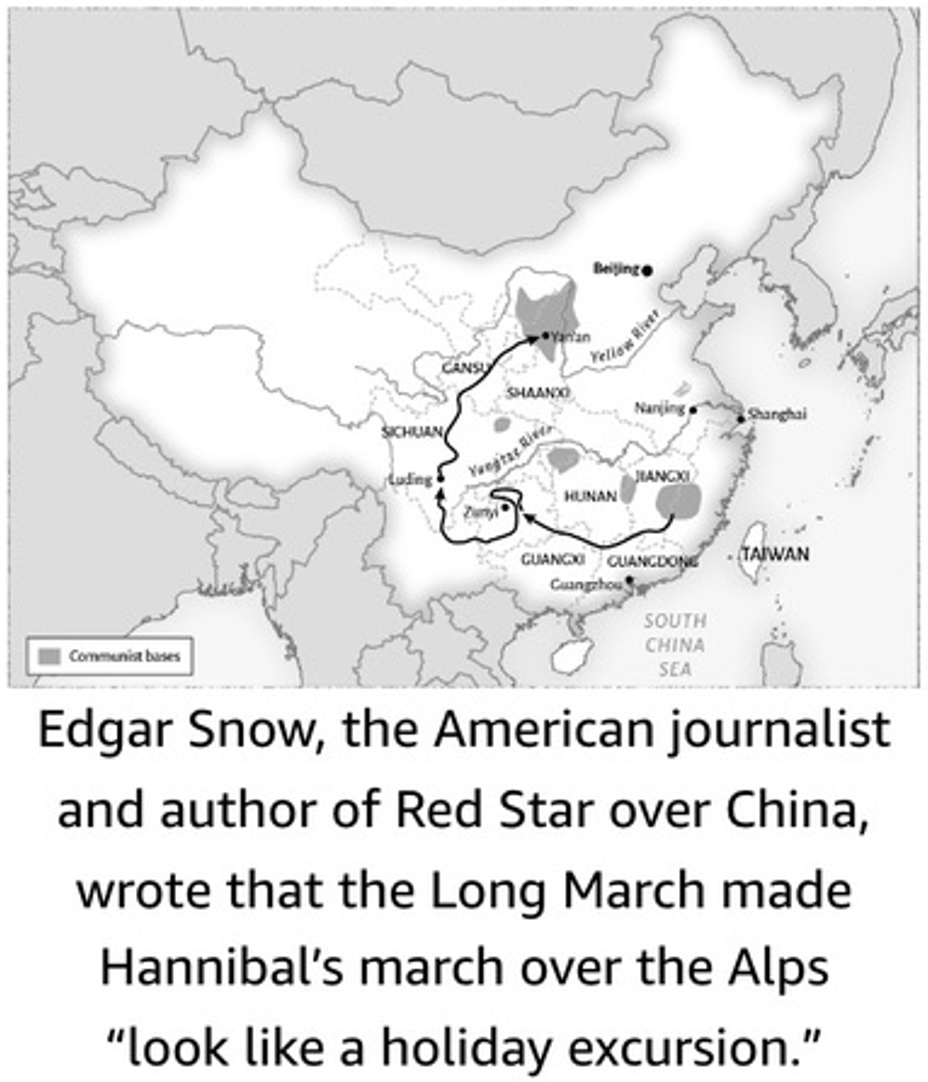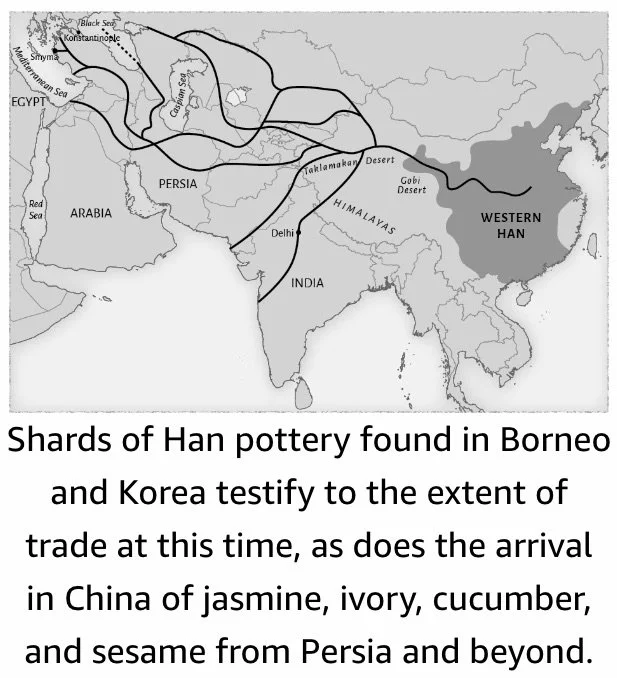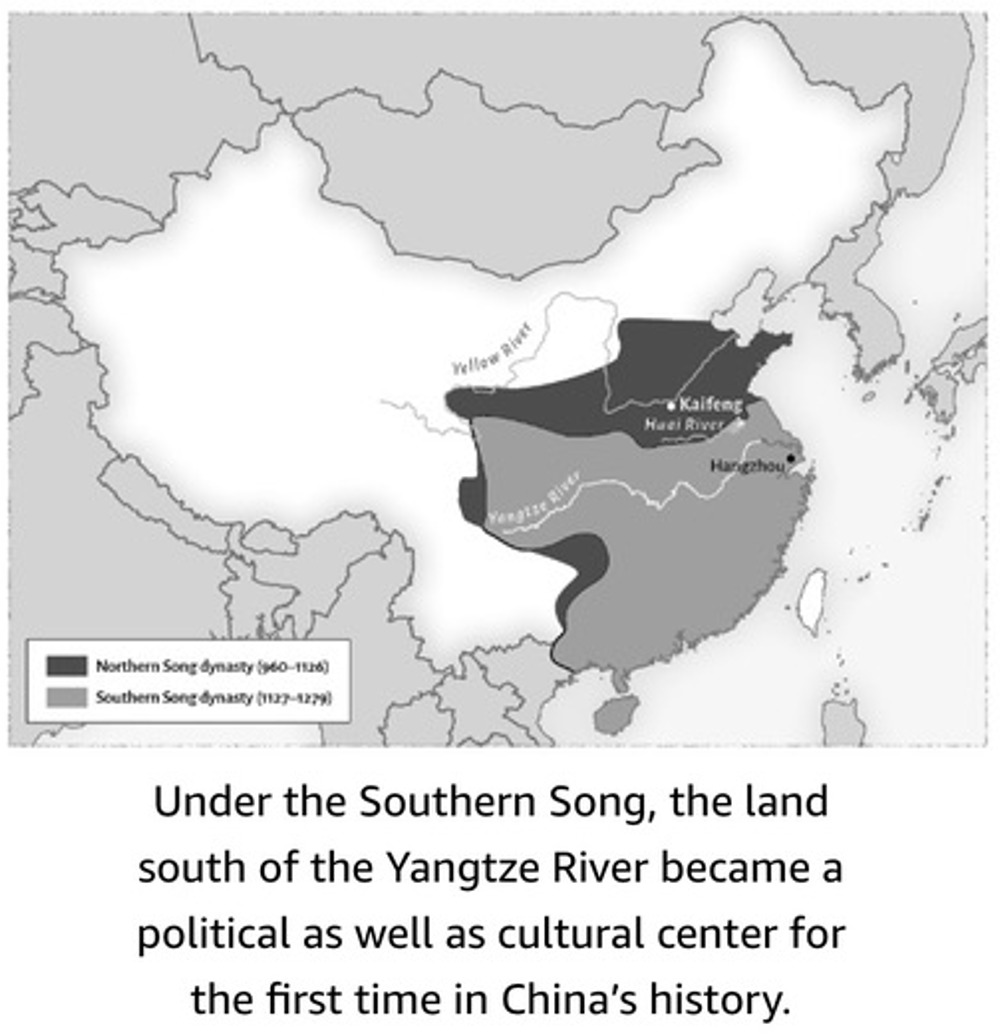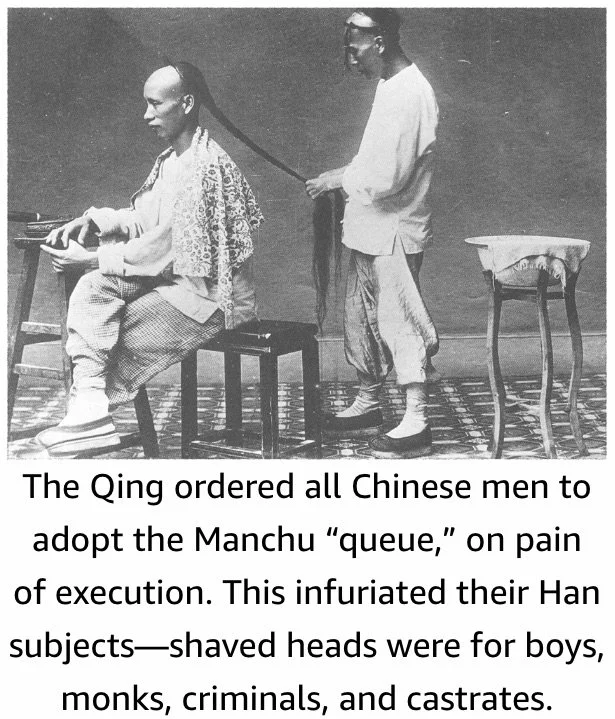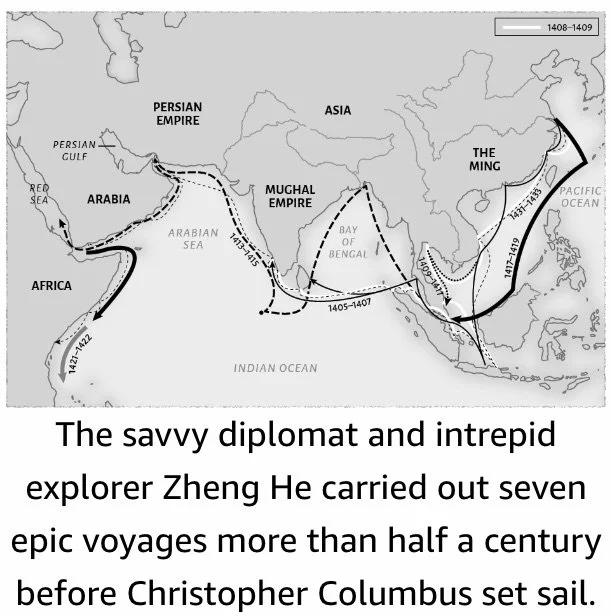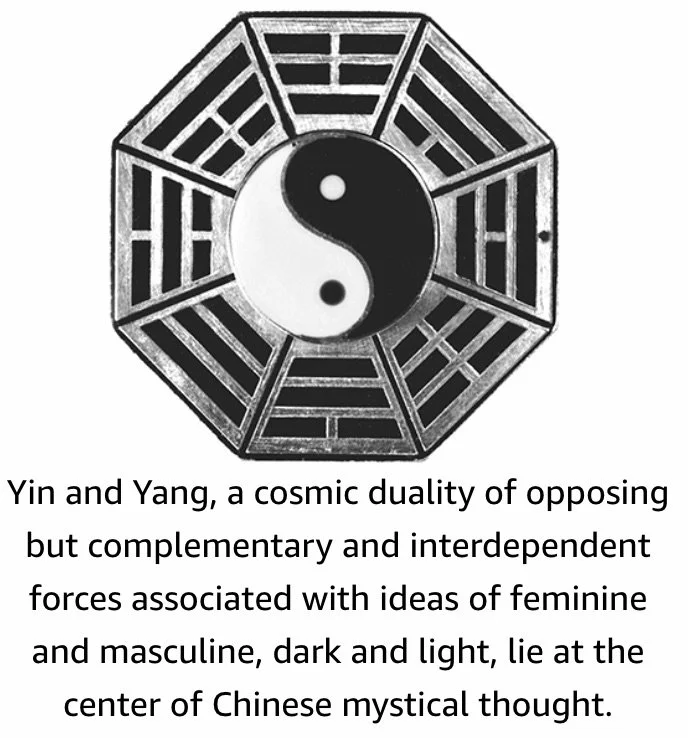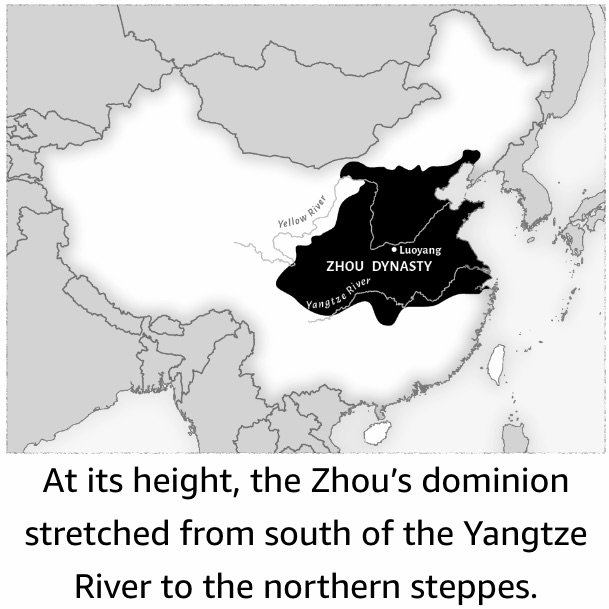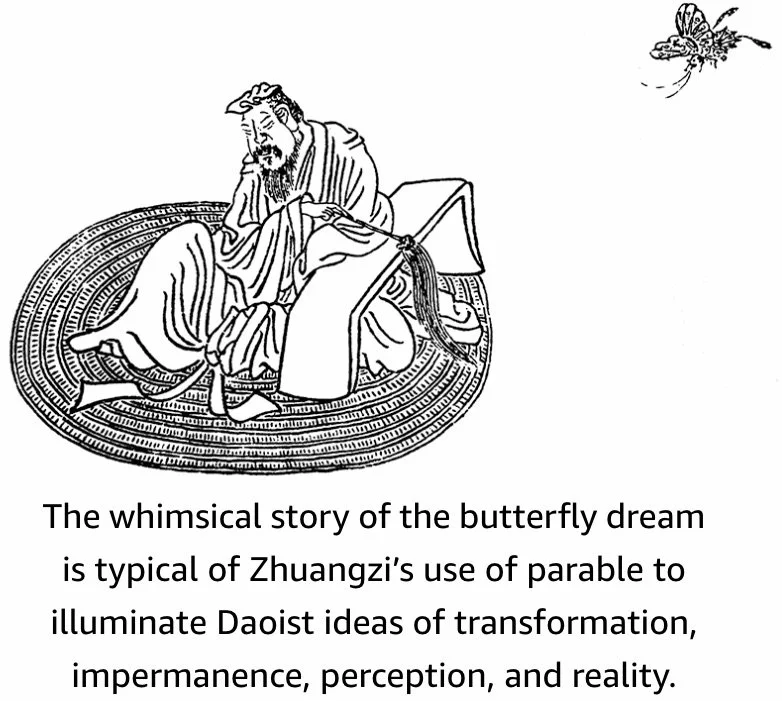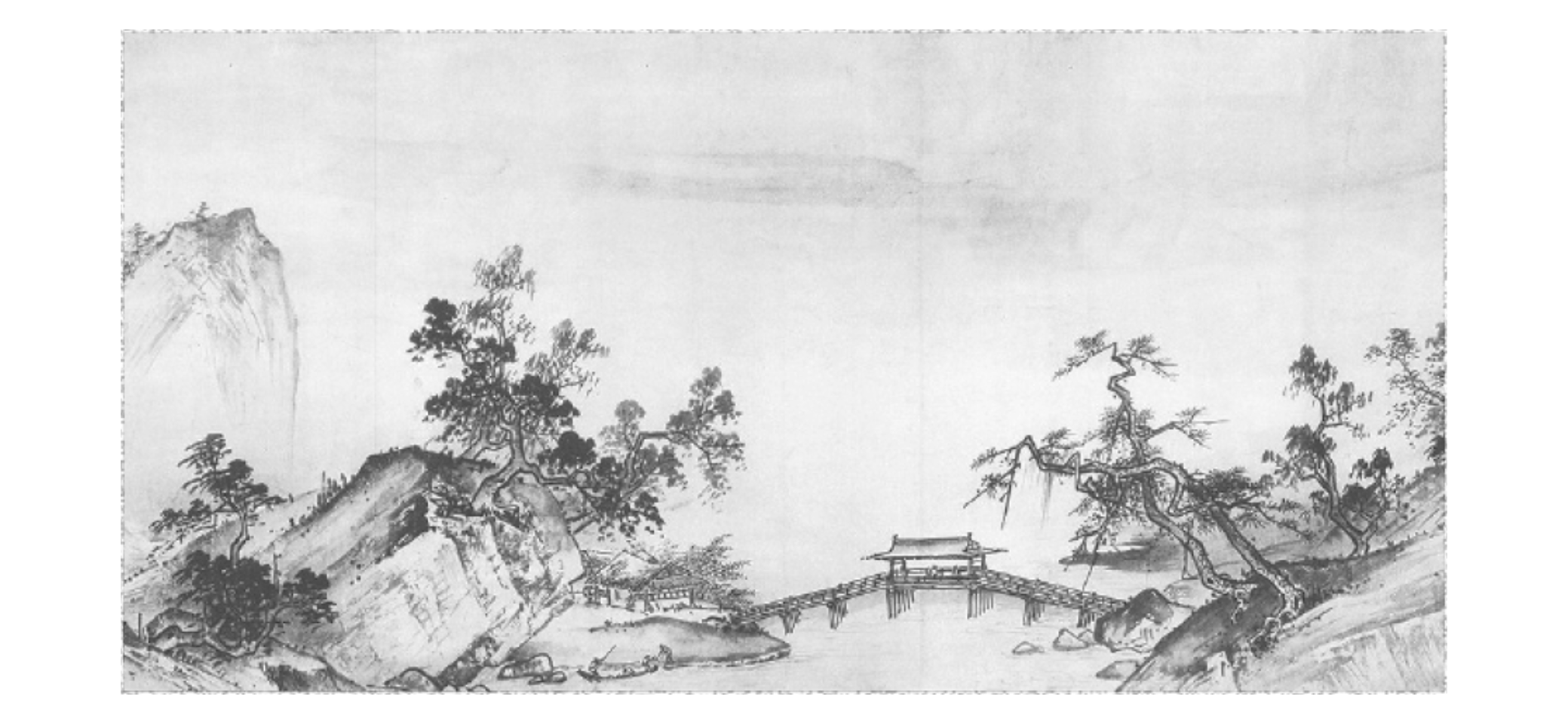The Shortest History of China by Jaivin
Ref: Linda Javin (2021). The Shortest History of China: From the Ancient Dynasties to a Modern Superpower- A Retelling for Our Times. The Experiment, LLC.
_______________________________________________________________________________
Summary
A history of China.
China derives its name from the Qín dynasty (221–206 BCE), via Sanskrit चीन (cīna) and Japanese 支那 (shina). In Chinese, the most common expression for China in the sense of a nation is Zhōngguó (‘Middle Kingdom’).
Another popular way to refer to China is Zhōnghuá 中華 (Huá 華- splendor, radiance, or prosperity), the name of one of the two ancient tribes of settlers along the Yellow River from which Han Chinese claim descent.
China has 23 provinces and five “autonomous regions;” Guǎngxī, Inner Mongolia, Tibet, Níngxià, and Xinjiang.
Pǔtōnghuà (aka Mandarin): Chinese National Language, spoken by less than a quarter of Chinese people.
Chinese surnames come before given names—Aì
The ethnic majority Han Chinese claim descent from two tribes, the Huá and Xià.
_______________________________________________________________________________
Philosophies
Confucius
Zhōngyōng 中庸: the “golden mean,” moderation in all things (Confucius).
Mèngzǐ (aka Mencius), (c. 372–289 BCE): A prominent follower of Confucius. He identified four cardinal virtues, associating each with an emotional quality: benevolence with compassion, righteousness with scorn, propriety with respect, and wisdom with judgment. Mencius’s ideas would become the basis for the Mandate of Heaven. The cycle of order and chaos noted by Mencius is a common theme of Chinese history.
Mòzǐ: Detested displays of wealth and elaborate rituals, advocating for an egalitarian, pacifist society animated by universal love.
Lǎozǐ (‘Old Master’): Believed that under perfect rule, people were unaware they even had a ruler: “When his tasks are accomplished and his work done, the people all remark, ‘We have done it ourselves.’” Laozi is attributed as the author of the mystical text the Dao De Jing, the foundational text of Daoism.
Zhuāngzǐ (~4c BCE): The best-known Daoist thinker after Laozi; illustrated the abstruse ideas in the Dao De Jing with witty parables and arresting anecdotes. One of Zhuangzi’s most famous stories involved a dream that he was a butterfly. Waking, he understood that he was a man who’d dreamt he was a butterfly. But then he wondered if perhaps he was a butterfly dreaming he was a man who’d dreamt he was a butterfly. How could one know?
Hánfēizǐ (280–233 BCE): Founder of Legalism, he argued that governing by moral example, as advocated by Confucius, was futile. Right and wrong were whatever the ruler wanted them to be.
The three major streams of thought—Confucianism, Daoism, and Legalism—together with other different schools and variations, collectively known as the “One Hundred Schools of Thought,” would compete, interact, and inspire society and governance in China for millennia.
_____________________________________________________________________________
Mythology
A popular Chinese creation story tells us, primal chaos congealed into an egg, in which the complementary cosmic energies of Yī n陰 and Yáng 陽 thickened around a hairy, horned giant called Pángǔ. Eighteen thousand years passed. Pangu hatched fully formed, holding an axe, with which he hacked apart the Yin and Yang. The Yin became the earth beneath his feet, and the Yang, the sky. As he grew taller, he pushed the two further and further apart. After Pangu died, his flesh turned to soil, his sweat to rain, and his breath to wind. His blood flowed as rivers and seas. His eyes became the sun and the moon. From his hair sprang plants and trees, and the fleas in his fur became animals and people. Eons flew by. Warring deities laid waste to the heavens. Then Nǚwā, the daughter of the celestial Jade Emperor, repaired the sky with colored stones. Some say it was Nüwa who created humans, fashioning them from clay.
_____________________________________________________________________________
Ecology
Rivers: The Indus, Ganges, Brahmaputra, Irrawaddy, Salween, and Mekong (all originating in Tibet).
Projects: Afforestation of the Tibetan Plateau.
_____________________________________________________________________________
Empires
Qin Empire (221-206 BCE)
The first unified and centralized Chinese state; Introduced a single currency, round copper coins with a square hole in the middle, unified measurements for length and volume, including a standardized width for cart axles, and standardized writing.
Capital: Cháng’ān (near present-day Xī’ān).
Legacy: The Qin live on as a symbol of tyranny—the expression “burn the books and bury the scholars.”
Han Empire (206 BCE- 220)
Began construction of the Great Wall of China (against Xiongnu who was menacing their N. borders). Over four centuries, the Han would maintain and build some 10,000 km of Great Walls.
Invented the world’s first paper by pressing flat felted sheets made of wet mulberry bark, rags, hemp, and other fibers; Cài Lún (48-121), the seismograph, odometer carts (on which mechanical figures banged drums and gongs to mark the miles), topographical maps (with rice), astronomical star charts.
Han doctor Huà Tuó published the first major text on herbal medicine, performed surgery after putting his patients to sleep with an anesthetic drink, máfèisàn 麻沸散, concocted from wine and a kind of cannabis compound like hashish.
Lessons for Women: written by the first female historian, admonished women to guard their chastity, not to “weary others with much conversation,” and to devote themselves to sewing, cooking, and other such “womanly work.” Lessons for Women helped transform abstract ideas about women’s place in The Analects into an increasingly strict code of behavior.
Buddhism first arrives in China during the Han via the Silk Roads.
During the wars of the first part of the 4c, ~1M refugees fled south, shifting the heart of Han civilization to the fertile lands below the Yangtze for the first time.
Three Kingdoms Period (220-280)
Jin Dynasty (266-420)
Huā Mùlán (b. 412): Disguised herself as a boy to take the place of her elderly father and served with distinction for twelve years. When some of her fellow soldiers later ran into her dressed in women’s clothes, they were astonished, never having guessed her gender. Mùlán fought on behalf of the Northern Wei dynasty, whose ruling clan were the Xiānbēi, a proto-Mongol tribe.
Tang Dynasty (618-907)
Capital: Chang’an.
Tang women’s fashion inspired the Japanese kimono and the Korean hanbok, and the city of Kyoto modeled itself on Chang’an.
Famed Tang writer Duàn Chéngshì wrote one of the earliest “Cinderella” legends, it tells of a young, beautiful, and talented girl, Yè Xiàn, who is tormented by her mean and ugly stepmother and stepsister. A magical fish befriends her, but they kill it. As a spirit, the fish still manages to provide her with beautiful clothes and tiny golden slippers for her to wear to a gathering hosted by a king. After her stepmother and stepsister see her there, she flees, losing one slipper. The slipper eventually leads the king to Ye Xian, and he makes her his wife.
A time of relative liberation for women, who could take lovers or remarry without incurring social disapprobation, and whose learning and talents were celebrated, later shut down by the Song.
Song Dynasty (960-1279)
Capital: Hangzhou.
The Southern Song enjoyed remarkable prosperity. By 1123, an unprecedented 15% of its 90M people lived in large urban centers that were among the world’s most populous.
After the Song lost the N, the Silk Roads were inaccessible and they turned to the sea.
Foot-Binding: The practice of deforming a young girl’s feet into a hooflike shape through the use of ever tighter bandages that eventually break the bones of the foot—further restricting their movements.
Yuan Dynasty (1279-1368)
The Yuan introduced chāo 鈔, paper currency.
Ming Dynasty (1368-1644)
Capital: Nanjing (moved to Beijing in 1402 under Yongle) with the country divided into 15 provinces.
Ming physician Lǐ Shìzhēn compiled the Compendium of Materia Medica, the basis for traditional Chinese medicine, which includes prescriptions for more than 11,000 compounds using almost 2000 ingredients.
Qing Dynasty (1644-1912)
Lu Xun’s most iconic work, the novella The True Story of Ah Q, is set at the end of the Qing. Its eponymous scabby antihero is a ne’er-do-well whose chief preoccupation is saving face and whose main talent is self-deception, turning every defeat into a mental victory. He is servile to his superiors, and bullies those even lower on the social scale than himself. Lu Xun wrote that he wanted readers to recognize Ah Q in themselves as well as in the broader society, opening “a road to self-examination.”
Queue Order: Haircut that shows subservience to the emperor.
Empire of China
Blue Shirts Society: A proto-fascist paramilitary organization modeled after Mussolini’s Blackshirts, disappeared, tortured, and murdered suspected Communist sympathizers.
PRC
The party-state manages the people through “stability maintenance” (stricter policing), “harmony” (social unity through ideological indoctrination and censorship), “patriotic education” (harnessing the force of nationalism), and the building of a “socialist market economy.”
Red Guards: Student Groups loyal to Mao and the CPC, some as young as 12, who carried out the cultural revolution persecuting anyone with connections to Taiwan or the KMT.
Political System
General Secretary: Presides over the CPC.
CPC: Makes Policies, guides the states, and choses leading comrades for top govt posts.
Propaganda Department (CPC): Disseminates information about policies and laws and oversees campaigns to indoctrinate and persuade.
National People’s Congress (NPC): Passes CPC policies into laws.
Head of the NPC (Chairman aka President): Leads and controls the Army.
State Council: Supervises the implementation of policy and law.
Dual Leadership: Exists at all levels of govt leadership; cities have both a mayor and a CPC secretary.
Cadre (ganbu): Anyone who works for the party or state at any level, cadres are divided into hierarchical classes that determine their privileges and rights.
Class Status: Assigned to all individuals by the CPC based on occupation, political history, and family background. Class status determines all, from access to higher education to marriage prospects. It was inscribed in a person’s dàng’àn, their secret dossier.
_____________________________________________________________________________
Terminology
All Under Heaven: The belief that China can be a moral, political and economic great power.
China Dream: A world united by a PRC-led Community of Shared Destiny for Mankind.
China Model (aka Beijing Consensus): Development, prioritizing prosperity and stability over political freedom and choice.
Ching (‘Book of Changes’): The I Ching contains 64 hexagrams, representing all possible groupings of solid (Yang) and broken (Yin) lines in sets of six.
‘Chu songs on all sides’: Hopelessly besieged and isolated.
Great Firewall of China: A multilayered system of surveillance, control, and censorship.
Guān Yǔ (160–221): The Chinese God of War, immortalized as Guān Gōng.
Iron Rice Bowl: Guaranteed lifetime employment, housing, medical care, and education for one’s children.
Jīngzhōng Bàoguó (精忠報國): Serve the Country with undying loyalty.
Mandate of Heaven (tiānmìng 天命): The notion the emperor, or son of heaven, enjoys a semidivine authority (Mèngzǐ).
Pǔtōnghuà (aka Mandarin): Chinese National Language, spoken by less than a quarter of Chinese people.
Recognize the Ah Q in Yourself: “A road to self-examination” to identify the faults in your character (Lu Xun).
‘Sell your Smiles:’ Chinese vernacular for prostitution.
Sericulture: Silk-making; chopping mulberry leaves to feed the silkworms (larvae of the Bombyx mori moth) and collecting and boiling of cocoons to loosen their threads before spinning, dyeing, and weaving them into cloth.
Silk & Tea Roads: The routes of commerce linked Chang’an to Central Asian kingdoms and Persia via the Taklimakan Desert in the region today known as Xinjiang.
Skynet Project: A PRC project that integrates big data, biodata, facial recognition, and human systems of surveillance and control.
Spiritual Opium: Western influence.
Third Front: A PRC top-secret military-industrial complex.
‘To cut the sleeve’(duànxiù 斷袖): A metaphor for homosexuality.
Wife (nèirén 內人): “Inside person.
Zhōngyōng 中庸: the “golden mean,” moderation in all things (Confucius).
_____________________________________________________________________________
Misc Quotes
How many libraries must be set on fire, how many ideas erased, so an empire can paint a mirage of national unity from the ashes, draw a border around different names and tongues, and call it ‘all under heaven’?-Yangyang Cheng, 2019.
In the way of All Things Under Heaven, that which has long been divided must come together, and that which has come together must fall apart.-Luó Guànzhōng’s, Romance of the Three Kingdoms (14c).
Fragrant, plants, cover, idle, door.-Unk.
The only way to learn from history is to learn history.
Listen to all sides if you want to be enlightened; rely on one if you would stay in the dark.-Sima Guang, Song Historian.
Those who speak Know nothing; Those who Know Are silent. Those Words, I’m told, Were uttered By Lao-tzu. If we’re to believe That he himself Was someone who Knew, Why did he end up Writing a Book Of Five Thousand Words?-Poet Bái Jūyì.
I have never seen a man who loved virtue as much as sex.-Confucius.
There is nowhere darker than an Iron House.-Unk.
The refusal of one decent man outweighs the acquiescence of the multitude.-Sima Qian, Han.
Speak in the language of the time in which you live.-Hu Shih, Philosopher.
What condemns dynasties is corruption and division; what is needed is discipline, unity, and greater adherence to ideology.-Xi Xingping.
The elimination of politically inconvenient aspects of history from textbooks fosters an inflamed and irrational nationalism that damages China’s ability to act responsibly on the world stage.-Unk.
99% of people charged with a crime in PRC courts receive a guilty verdict.
The biggest threats to China are invasion, subversion, and division.-Xi Jinping.
The greatest pleasures in life are vanquishing one’s enemies, seizing their horses and possessions, and ravishing their weeping women.-Genghis Khan.
You can conquer ‘all under heaven’ on horseback, but you can’t govern it from there.-Liú Bǐngzhōng to Khublai Khan.
“My descendants will go clothed in gold-embroidered stuffs; they will feed on the choicest meats, they will bestride superb steeds and press in their arms the most beautiful of young women. And they will have forgotten to whom they owe all that.”-Genghis Khan’s Last Words.
A revolution is not a dinner party, or writing an essay, or painting a picture, or doing embroidery; it cannot be so refined, so leisurely and gentle, so temperate, kind, courteous, restrained and magnanimous. A revolution is an insurrection, an act of violence by which one class overthrows another.-Mao, 1927.
The Japanese invasion is a “superficial wound” compared with the “cancer” that is Communism.-Chiang Kai Shek.
_____________________________________________________________________________
Chronology
Sep, 2020: PRC President Xi Jìnpíng pledges to the UN that China will reduce its net CO2 emissions to zero by 2060.-China by Jaivin.
Early, 2020: Wuhan doctor Lǐ Wénliàng is pressured into silence by PRC Police after attempting to warn colleagues about COVID.-China by Jaivin.
2020: The PRC passes a national security law for Hong Kong that outlaws “subversion,” nullifying the guarantees of legislative and judicial autonomy, and authorizes mainland secret police to operate in Hong Kong; mass arrests of pro-democracy activists and raids on independent media follow.-China by Jaivin.
2019: Taiwan becomes the first Asian nation to legalize same-sex marriage.-China by Jaivin.
2019: Hong Kong Democracy Protests; the biggest demonstrations in the territory’s history begin in response to chief executive Carrie Lam’s proposed extradition law that would allow Hong Kong citizens who had violated Chinese law (advocating for democracy, for example) to be sent to the mainland for trial.-China by Jaivin.
2019: The CPC release an app, Xuéxí qiángguó (study and the strengthen the nation), a gamified, digital Little Red Book, political study session, and pocket dang’an (personal file) in one, the app lets users earn points while mastering Xi Jinping Thought. Approved behavior such as donating to charity, caring for the elderly, or volunteering to help in a harvest might be rewarded with a hotel upgrade, a better job, or faster internet speeds. Failing to show up for a restaurant booking, not paying a debt, displaying tattoos, or spreading political “rumors” could result, depending on the seriousness of the offense, in being banned from train or plane travel, or even being denied a good job or subjected to public shaming on giant digital billboards.-China by Jaivin.
2017: The PRC begins interning Uyghurs, Kazakhs, and other Muslims, purportedly >1M in hundreds of detention camps in Xinjiang for “crimes” ranging from growing a beard, owning a Qur’an (Koran), or having too many children. The internment was in response to a series of violent incidents between Uyghurs and Hans, and several isolated terrorist attacks by advocates of Uyghur independence. Beijing describes the camps as both “de-radicalization” centers and vocational training schools.-China by Jaivin.
2016: The Hague rules against PRC claims to islands, reefs, and shoals in the SCS.-China by Jaivin.
Mar, 2009: Xi Jinping is confirmed as President of the PRC. Xi’s first act is to launch an ambitious campaign against corruption, sweeping up “tigers” (high officials) and “flies” (low-ranked officials) in its dragnet.-China by Jaivin.
Nov, 2008: The CPC names Xi Jinping its new general secretary and chair of the Central Military Commission.-China by Jaivin.
May, 2008: An M8 Earthquake strikes Sichuan province killing 90K.-China by Jaivin.
2004: The world’s first Confucius Institute opened in Seoul. Run by the Ministry of Education, Confucius Institutes promote PRC soft power through language teaching and cultural activities. They have since been evicted from a number of universities in the US, Canada, and the EU.-China by Jaivin.
2002: China and the Association of Southeast Asian Nations (ASEAN) commit to handling disputes over mutually claimed islands, reefs, and shoals in the South China Sea in a “constructive manner.”-China by Jaivin.
31 Dec, 1999: Portugal returns Macao to China.-China by Jaivin.
1997: Death of PRC Premiere Deng Xiaoping.-China by Jaivin.
Mid-1990s: The PRC introduces tourism, the 2d weekend, and more public holidays.-China by Jaivin.
Mid 1990s: The CPC places all qigong groups under supervision. One group resisted. The Fǎlúngōng, led by Lǐ Hóngzhì, resistst. The Fǎlúngōng combine Buddhist and Daoist notions of compassion with racialist ideas, homophobia, and the conviction that extraterrestrials were hollowing out humanity spiritually for nefarious purposes. The CPC denounced Falungong as “feudal superstition”.-China by Jaivin.
3 Jun, 1989: Tiananmen Square Incident; The PLA open fire on protesters after being given orders to clear the square “with extreme prejudice;” thousands die.-China by Jaivin.
Apr-Jun, 1989: Tens of thousands of defiant students flood into the streets and march in a swelling parade toward Tiananmen square, igniting a popular, nationwide movement demanding democracy, accountability, and freedom of speech. Deng was furious. After Deng imposed martial law on the capital, citizens of all ages poured onto the streets to block the army from getting to the students in the square.-China by Jaivin.
15 Apr, 1989: Death of Hu Yaobang; over the following days, university students began to gather in Tiananmen Square.-China by Jaivin.
19 Dec, 1984: A PRC-British agreement is signed detailing the “one country, two systems” formula: Hong Kong retains its way of life, legal system, and “high degree of autonomy” for at least 50y from 1997.-China by Jaivin.
Sep, 1981: The CPC offers Taiwan a Nine-Point Plan for “peaceful reunification,” reiterating early proposals for a “one country, two systems” formula. If the island resisted reunification, Beijing wouldn’t rule out the use of force. Taiwanese President Chiang Ching-kuo responded: “No meeting, no discussion, no compromise.”-China by Jaivin.
1980: The One Child Policy is introduced by China’s CPC who identifies unfettered population growth as an obstacle to prosperity; 9 of 10 of the mainland’s 981M people survived on or under the World Bank’s “extreme poverty” line of $2 a day.-China by Jaivin.
Mar, 1979: Deng announced the Four Basic Principles, immutable and nonnegotiable: 1) adherence to the Socialist road, 2) the dictatorship of the proletariat, 3) the leadership of the CPC, 4) Marxism– Leninism–Mao Zedong Thought.-China by Jaivin.
Dec, 1978: The Central Committee of the CPC endorse the principle of collective leadership.-China by Jaivin.
27 Nov, 1978: The Democracy Wall movement in Tiananmen Square; tens of thousands demand democracy and human rights for China.-China by Jaivin.
1978: Vietnam invades Cambodia, ousting the Chinese-backed Khmer Rouge, and signing a mutual defense treaty with the USSR.-China by Jaivin.
9 Sep, 1976: Death of Mao (aged 82); Hua Guofen succeeds Mao as CPC Chairman and arrests Jiang Qing, Yao Wenyuan, and the other two members of the Gang of Four, accusing them of sedition.-China by Jaivin.
28 July, 1976: A massive earthquake devastates Tangshan killing ~250K.-China by Jaivin.
1975: Death of Chiang Kai-shek, aged 87, from illness in Taiwan.-China by Jaivin.
1971: The PRC take over the China seat at the UN from Taiwan. Japan and Australia normalize relations with Beijing.-China by Jaivin.
1969: Sino-Soviet Undeclared War; the Soviet and Chinese Armies fight a 7-month battle along their E. border with Hēilóngjiāng and W. border with Xinjiang, with hundreds of casualties.-China by Jaivin.
1968: The USSR invades Czechoslovakia and declared the Brezhnev Doctrine.-China by Jaivin.
1966-1976: The Great Proletarian Cultural Revolution; Mao’s enemies are crushed.-China by Jaivin.
1969: The CPC declares the Cultural Revolution over.-China by Jaivin.
1967-1968: The Red Guards destroy mosques, churches, Daoist and Buddhist temples, and religious statuary. They attacked women for wearing makeup and destroy everything from Ming-style furniture to translations of Western novels.-China by Jaivin.
Aug- Nov, 1966: The 8 Red Guard Rallies in Tiananmen Square under Mao and fellow ideologues whip up political hysteria. Mao and Lin Biao called on the Red Guards to destroy the Four Olds: old ways of thinking, customs, culture, and habits to make way for a new, revolutionary culture.-China by Jaivin.
Aug- Sep, 1966: Red Guards kill or drive to suicide nearly 1,800 people in Beijing alone.-China by Jaivin.
1 Jun, 1966: Formation of the Red Guards; A group of students at an elite middle school in Beijing meet at the ruins of the Yuanmingyuan, vowing to protect Mao and the revolution with their lives. Mao urged the young to attack the “class enemies” and “revisionists” among their teachers and school administrators. The Great Proletarian Cultural Revolution was on.-China by Jaivin.
1964: China builds the atomic bomb, spearheaded by the Father of Chinese Rocketry, who had been named first director of Caltech’s JPL prior to falling victim to persecution in anti-Communist witch hunts.-China by Jaivin.
1963: The Socialist Education Movement (aka the 4 Cleanups Campaign) is launched my Mao to address the problem of “reactionary” elements within the CPC and the bureaucracy, resulting in the persecution of >5M people and the deaths of tens of thousands.-China by Jaivin.
1962: China and India fight a brief border war.-China by Jaivin.
1961: Relaxation of the Great Leap Forward; with Mao’s grudging approval, the CPC leadership—including Deng Xiaoping and President Liú Sháoqí, reduce the size of the agricultural communes and give peasants scope to grow their own food and sell the surplus at local markets.-China by Jaivin.
1960: The PRC’s first homegrown computer “107” Is built by a team led by Xià Péisù.-China by Jaivin.
10-23 Mar, 1959: The Tibetan Uprising.-China by Jaivin.
Mar, 1959: PLA commanders in Lhasa invited the Dalai Lama to their HQ, stipulating that he was to come alone. Fearing a kidnap plot, some 300K Tibetans surround the Dalai Lama’s residence, the Norbulinka Palace, to protect him. The Dalai Lama flees to India and the Chinese military shells Norbulinka, killing the thousands still camped outside.-China by Jaivin.
1959: The USSR withdraws aid to the PRC.-China by Jaivin.
1958-1961: Over a 3yr period from the start of the Great Leap, tens of millions perish.-China by Jaivin.
1958: The Great Leap Forward; All property is nationalized with ensuing Ecological collapse; food begins to run out, and local cadres, under pressure to meet unrealistic quotas, confiscate farmers’ seed grain and raid emergency granaries while official media churned out surreal accounts of triumph.-China by Jaivin.
1955: Mao orders ‘equal pay’ for all counties and collectives stating “women hold up half the sky” following a village dispute in which Yì Huáxiān, explains that with men earning 7 points a day and women 2.5, women had little incentive to work. After equal pay was instituted, all the women went to work, and productivity increased threefold.-China by Jaivin.
1953: The PRC launches its first Soviet-style economic Five-Year Plan. Within 3 years, the PRC owns all mainland enterprises and businesses, and collectivization, the consolidation of land to agricultural cooperatives (later- ‘Peoples Communes’) of 200-300 rural households each, is begun.-China by Jaivin.
25 Jun, 1950- 27 Jul, 1953: The Korean War; ~1/10 Koreans die in the conflict; the majority of the 3M or so casualties were civilians.-China by Jaivin.
1951: US and Korean forces cross the 38th parallel, Mao deploys ~3M ‘volunteers’.-China by Jaivin.
25 Jun, 1950: North Korea invades South Korea igniting the Korean War; Kim attacks the South armed with Russian tanks; UN and US troops push him back across the parallel.-China by Jaivin.
1950: The PRC passes the Agrarian Reform Law extending the policy of land reform nationally, putting all arable land under state ownership and dividing it among those who farmed it.-China by Jaivin.
1950-1953: The PRC executes ~2M accused “counterrevolutionaries,” including remnant KMT.-China by Jaivin.
Dec, 1949: Chiang retreats to Taiwan with ~2M troops and followers.-China by Jaivin.
1949-1951:The Tibetan govt, forced to negotiate, sign a Seventeen-Point Agreement with Beijing promising the Tibetans religious freedom and self-governance as an “autonomous region” within the PRC.-China by Jaivin.
1949- Present: The People’s Republic of China.-China by Jaivin.
1 Oct, 1949: The year of Liberation; Birth of the PRC led by Mao (aged 55).-China by Jaivin.
28 Feb, 1947: The 28 Feb Incident in Taiwan; ~28K people are killed during protests following the pistol whipping of a widow suspected of selling contraband cigarettes by a KMT official. The Incident planted the seeds of the Taiwanese independence movement.-China by Jaivin.
1947: The CPC led by Mao evacuate Yan’an under KMT attack.-China by Jaivin.
1945: End of WWII; Taiwan, under Japanese rule since the Sino-Japanese War, returns to Chinese sovereignty. Chiang’s government had financed itself during the war by printing money, and now China suffered from hyperinflation, mass unemployment, and food shortages. Its war dead—~4M soldiers and ~20M civilians. The KMT funded the war effort by printing even more money and selling off the country’s gold reserves, plunging the country ever deeper into financial crisis.-China by Jaivin.
1942: The Yan’an Rectification Movement is launched by the CPC. Setting the pattern for future “thought reform” movements and ideology-based purges, it demands that people remold their thinking through a rigorous process of criticism and self-criticism, “struggle,” and confession.-China by Jaivin.
1940: Japan establishes a puppet Reorganized National Government in Nanjing.-China by Jaivin.
Nov-Dec, 1937: The Rape of Nanjing (aka the Nanjing Massacre); The Chinese Nationalist government decamps for Chongqing, abandoning Nanjing to the Japanese. There, over 6 weeks, Japanese troops slaughtered residents; gang-raped women and girls, some to death; and committed countless other atrocities, including bayoneting infants. The death toll is estimated in the hundreds of thousands.-China by Jaivin.
Aug, 1937: Japanese tanks roll through Qianmen Street in Beijing. The Nationalists left the city to the Japanese, who made it their base for operations in N. China. Within months, Shanghai, Guangzhou, and Hànkǒu were in Japanese hands.-China by Jaivin.
7 Jul, 1937: Japanese Invasion of China (S. of the Great Wall).-China by Jaivin.
Oct, 1936: The Xi’an incident; Mao and Zhou contact the “Young Marshal,” Zhang Xueliang, who concocts a story to get Chiang to fly to Xi’an, where they take him captive at Huaqing Pools, and gain his concurrence to join the KMT and the CPC against the Japanese.-China by Jaivin.
1935-1945: Unit 731; ~3K Chinese and Russians die in the notorious Japanese secret center for “germ warfare research” in Manchuria, which carries out medical experiments, infects subjects with anthrax and typhoid, and carries out vivisections on pregnant women. After the war, the US offers the perpetrators immunity from prosecution in exchange for their research data.-China by Jaivin.
16 Oct, 1934- Oct, 1935: The Long March; CPC forces trek ~10K km across 11 provinces, in sweltering heat and freezing cold, crossing snowy mountains, and fighting off attacks by the KMT, bandits, warlords, and hostile southern tribesman. Their numbers shrink to <35K.-China by Jaivin.
Oct, 1935: The Long Marchers arrive at the isolated, impoverished town of Yán’ān in Xi’an.-China by Jaivin.
Jan, 1935: The Long March reaches Zūnyì.-China by Jaivin.
16 Oct, 1934: The Long March begins; ~100K CPC fighters break through KMT lines.-China by Jaivin.
12 Nov, 1933- 16 Apr, 1934: The First East Turkestan Rep. is founded by Muslim Uyghur separatists in N. Xinjiang.-China by Jaivin.
28 Jan, 1932: The Japanese bomb Shanghai; the first ‘terror bombing’ of a civil population.-China by Jaivin.
27 Jan, 1932: Japanese and Chinese forces skirmish in Shanghai.-China by Jaivin.
Sep, 1931: The Japanese Kwatung Army invades and occupies Manchuria.-China by Jaivin.
1930: A KMT-aligned warlord tortures and executes Mao’s second wife, the 22yo Yáng Kāihuì.-China by Jaivin.
1928: Mao deserts his second wife, Yáng Kāihuì and their three kids, for Hè Zǐzhēn, his third wife.-China by Jaivin.
3 Jun, 1928: Assassination of Zhāng Zuòlín, a Chinese warlord sympathetic to the Japanese Kwatung Army and Japanese Occupation of NE China by an independent group of officers of the Kwatung Army, who hoped his son, the “Young Marshal” Zhāng Xuéliáng, would put up less resistance to Japanese Occupation. They underestimated him and he joined forces with the KMT.-China by Jaivin.
Jan, 1928: Chiang becomes generalissimo of the Nationalist Army, chair of the KMT’s Central Executive Committee, and head of the government in Nanjing.-China by Jaivin.
Apr- Dec, 1927: The White Terror; the KMT slaughters, arrests, and imprisons CPC members and the communist followers and sympathizers. In Guangzhou, KMT soldiers round up communists, identifying them by the red stains on their necks left by their hand-dyed scarves. To save bullets, the Nationalist soldiers roped the leftists together and pushed them into the Pearl River to drown.-China by Jaivin.
Mar, 1927: KMT-CPC Split; Following a citywide strike in aid of KMT-led forces in Shanghai, Chiang turns without warning on his CPC allies, slaughtering anyone suspected of having Communist sympathies.-China by Jaivin.
Jul, 1926: Chiang Kai-shek leads an Expedition N. against the warlords at the head of an army consisting of both Communists and Nationalists. By the end of the year, they reached Wuhan. The Communists wanted to continue to drive N, toward Beijing. Chiang decided to move E, toward Shanghai, instead. The army split, with Communists and their sympathizers in the KMT remaining in Wuhan.-China by Jaivin.
1924: The KMT establish the Whampoa military academy in Guangzhou to train members of both parties as officers. Communist Zhōu Ēnlái served as the head of the political department and the first commandant was Chiang Kai-shek, a committed anti-Communist.-China by Jaivin.
23 Jul, 1921: The founding congress of the Communist Party of China (CPC) is held by 13 men, including Mao Zedong in Shanghai; inspired by the Russian Bolshevik revolution of 1917, and convinced that China needed more than gradual solutions and liberal ideas, they elect Chen Duxiu, the editor of New Youth, the party’s first secretary-general.-China by Jaivin.
4 May, 1919: The May 4th Movement; Thousands of university students in Beijing, their ranks swelled by ordinary citizens, march toward Tiananmen Gate and the Legation Quarter. They were as incensed at their government for failing to protect the nation’s interests as at the treaty itself. The Movement embraced the New Culture Movement to become a broad and lasting push for the interwoven goals of national salvation, political reform, civil rights, cultural renewal, and universal education.-China by Jaivin.
Apr, 1919: The Treaty of Versailles grants the German concessions in China to Japan instead.-China by Jaivin.
1918: Rise of the New Culture Movement in China; Students from Western-style universities advocate democracy, the rule of law, and civil rights, including for women.-China by Jaivin.
Summer, 1916: Qing loyalist General Zhāng Xūn (aka the Pigtailed General for his queue) places 11yr old Puyi back on the throne. After twelve days, Puyi abdicates a second time.-China by Jaivin.
Jul, 1916: Death of Yuan, Imperial China’s first ruler from Uremia.-China by Jaivin.
1 Jan, 1916: Yuan mounts the Dragon Throne as the self-anointed first ruler of the China Empire.-China by Jaivin.
1915: The 21 Demands are issued by Japan for wide-ranging economic, political, and military benefits in China, including dispensation to station police in the NE, which, since the Russo-Japanese War, it regarded as within its sphere of influence.-China by Jaivin.
1914: Sun Yat-sen flees into exile in Japan.-China by Jaivin.
May, 1913: The KMT is declared a seditious organization by Yuan Shikai and its members banned from parliament. KMT soldiers battle those loyal to Yuan.-China by Jaivin.
1913: The Rep. of China holds its first democratic elections, handing the KMT, led by Sòng Jiàorén, a clear majority. Sòng Jiàorén was on a station platform in Shanghai, about to board his train to Beijing, when an assassin armed with a Browning revolver rushed up and shot him.-China by Jaivin.
Feb, 1912: Abdication of Xuāntǒng, the last Qing emperor.-China by Jaivin.
1 Jan, 1912: Inauguration of Sun Yat-sen, the provisional president of the Rep. of China. His Revolutionary Alliance is reformed as the Nationalist Party, or Kuomintang (KMT), with the capital at Nanjing.-China by Jaivin.
1911-1949: The Rep. of China rules China.-China by Jaivin.
1911: Fall of the Qīng dynasty; overthrown by republican revolutionaries who rename the country the Rep. of China.-China by Jaivin.
1911: Military uprisings in Guangzhou and then Wǔhàn against the Qing Empire.-China by Jaivin.
1910: China formally abolishes slavery.-China by Jaivin.
1908-1912: The Qing Empire is ruled by Xuāntǒng (aka Puyi, aged 3), the last Qing Emperor.-China by Jaivin.
15 Nov, 1908: Death of Cixi, while recovering from stroke.-China by Jaivin.
11 Nov, 1908: Death of Qing Emperor Guangxu from sudden and violent stomach pains.-China by Jaivin.
1905: The Revolutionary Alliance is founded by Sun Yat-sen against the Qing.-China by Jaivin.
1904-1905: The Russo-Japanese War breaks out over, in essence, which power had the right to dominate and exploit the resources of NE China.-China by Jaivin.
1901: Australia passes the Immigration Restriction Bill (aka the White Australia Policy) banning Chinese immigration.-China by Jaivin.
2 Nov, 1899- 7 Sep, 1901: The Boxer Rebellion; the Boxers stage murderous attacks on Chinese Christians and foreigners.-China by Jaivin.
Sep, 1901: The Boxer Protocol is signed by the Qing as a long list of requirements (more ‘unequal’ treaties) to include indemnities equal to 6x the Qinqs annual revenue, payable in gold.-China by Jaivin.
14 Aug, 1900: An 8-Nation Allied Army, consisting of ~20K Japanese, British, US, French, German, Russian, Italian, and Austro-Hungarian troops, arrive at the walls of Beijing, after marching inland from Tianjin, where they put down the Boxer uprising there, and pummeled their way into the capital.-China by Jaivin.
21 Jun, 1900: Qing Empress Cixi declares war on foreign powers after Western troops attack Dagu forts near Tianjin.-China by Jaivin.
5 Jun, 1900: The Boxers, with red, black, and yellow turbans, rampage through Beijing.-China by Jaivin.
1898: The Society of the Righteous and Harmonious Fist (aka the Boxers) arise in NE Shandong. Its slogan was “Revive the Qing, Destroy the Foreign.”-China by Jaivin.
Jun, 1898: The 100 Days Reform is launched by Qing Emperor Guangxu, who asks for help from military officer, Yuán Shìkǎi, to stop the Empress Cixi from interfering. Instead, Yuan tells Cixi about her nephew’s request and Cixi has Guangxu detained. The 100 days reform was dead, some reformists managed to flee, six were caught and, on 28 Sep, beheaded. Empress Cixi assumes power.-China by Jaivin.
1894-1895: The Qing-Japanese War; the Japanese defeat the Qing, obliterating its N. fleet.-China by Jaivin.
1895: The Treaty of Shimonoseki; the Qing are forced to renounce any claim over Korea, grant Taiwan to Japan in perpetuity, and create an indemnity of 200M silver taels to Japan.-China by Jaivin.
1893-1894: Bubonic plague kills ~60K in Guangzhou, China. The plague reaches Hong Kong and then, via the British, to India and beyond, with an eventual global death toll of 15M.-China by Jaivin.
1887: Portugal acquires the right to “perpetual occupation” of Macao.-China by Jaivin.
Aug, 1884: The French destroy or sink all of the Qing Dynasties 11 vessels of the new S. Fleet.-China by Jaivin.
1875-1908: The Qing are ruled by Guāngxù (Tongzhi’s 3 yo cousin), 11th and last Qing Emperor, placed on the throne by Cixi, who continues to reign together with Ci’an “from behind the beaded curtain.”
1868: Japan adopts a constitutional monarchy, with an elected parliament, free public education, modern industry, and an advanced military.-China by Jaivin.
1862: Qing Muslims rebel in Xinjiang (outer China).-China by Jaivin.
1861-1875: The Qing are ruled by Tóngzhì (Xiánfēng’s bastard 5 yo son), 10th Qing Emperor. Tongzhi’s concubine mother Cixi, rules as the Empress Dowager Cíxǐ.-China by Jaivin.
28 Jun, 1856- 18 Oct, 1860: The Second Opium War (aka the Arrow War); A combined British & French force defeat the Qing.-China by Jaivin.
1860: The Convention of Peking; the British are granted the Kowloon Peninsula, on the mainland opposite Hong Kong Island, in perpetuity, the opium trade is legalized, and the Russians redraw their border with the Qing to their advantage, establishing Vladivostok in the Qing Manchurian homelands.-China by Jaivin.
Autumn, 1860: A 39 member Anglo-French negotiation team arrive in Beijing. The Qing court imprisons them in the Yuanmingyuan, torturing 18 of them to death. In retaliation, a large Anglo-French force, led by Baron Gros and Lord Elgin, march on Beijing, sacking and burned the Yuanmingyuan. The image of the ruins of the Yuanmingyuan is central to the story of the “century of humiliation” at the heart of patriotic education in mainland China today.-China by Jaivin.
1858: The second series of Unequal Treaties, negotiated in Tianjin, create 10 more treaty ports, allow foreign navigation of the Yangtze, and open the hinterland to foreigners, including missionaries.-China by Jaivin.
1850-1861: The Qing are ruled by Xiánfēng, 9th Qing Emperor.-China by Jaivin.
1850-1864: The Taiping Rebellion (aka Revolution); one of the deadliest conflicts in world history and the bloodiest of the 19th century with ~20-30M deaths to violence, disease, or starvation; later noted by Mao as an exemplary peasant uprising.-China by Jaivin.
1853: The Taipings capture Nanjing, declaring it their “heavenly capital.”-China by Jaivin.
1847: Hóng Xiùquán declares himself the Chinese brother of Jesus Christ and the founder of the anti-Manchu Tàipíng Tiānguó (‘Heavenly Kingdom of Great Peace’) and declares it his mission to expel the Manchus, considered demons, and turn China into a Christian land. Xiùquán attracts hundreds of thousands to the Taipings’ cause.-China by Jaivin.
4 Sep, 1839- 29 Aug, 1842: The First Opium War; The British defeat the Qing.-China by Jaivin.
29 Aug, 1842: The Treaty of Nanjing (the first of the ‘unequal’ treaties) is signed by the Qing (under duress) granting the British access to Guangzhou, Shanghai, and three other “treaty ports.” It also cedes the island of Hong Kong—“fragrant port,” named for the spice trade—to the British in perpetuity and imposed indemnities on the Qing totaling 21M silver dollars. The US, France, and other nations piled on with their own demands, including “extraterritoriality”—exemption from local justice for foreigners who committed crimes in China.-China by Jaivin.
Sep, 1839: British warships blockade the entrance to Guangzhou’s harbor, smashing through Qing defenses, and capturing ports including Shanghai and Níngbō.-China by Jaivin.
Mar, 1839: Qing Emperor Dàoguāng sends his official Lín Zéxú to Guangzhou, to implement an opium ban. By July, Lin had arrested thousands of addicts and confiscated almost 23K kg of opium. Lin demanded that the ~350 or so foreign traders in Guangzhou surrender their opium. As tensions rose, he locked them in their warehouses. It took six weeks, but the foreigners handed over 20K chests. Now in possession of almost 1.4M kg of opium, Lin Zexu had it mixed with water, salt, and lime and flushed out to sea.-China by Jaivin.
1838: Opium is banned by Qing Emperor Dàoguāng.-China by Jaivin.
1821-1850: The Qing are ruled by Dàoguāng, 6th Qing Emperor.-China by Jaivin.
1820: The Qing began sending Han and Manchu settlers to Xinjiang and investing in canals and other agricultural infrastructure there to consolidate control over Zinjiang.-China by Jaivin.
1815: The British sent another envoy, Lord Amherst, to Beijing. Jiaqing expelled him after another tussle over the kowtow.-China by Jaivin.
1799: Death of Qianlong’s; the Qing court presents Heshen with a silk sash to hang himself.-China by Jaivin.
1796-1820: The Qing are ruled by Jiāqìng, 5th Qing Emperor.-China by Jaivin.
1793: The British sent an experienced diplomat, Lord George Macartney, to Qianlong’s court carrying a letter arguing for greater access to the empire’s markets, including a reduction in tariffs, the ability of merchants to live in China year-round, and the stationing of an ambassador in Beijing.-China by Jaivin.
1776: The Qing population of China reaches 300M.-China by Jaivin.
1755-1758: Dzungar Genocide; Qing troops massacre ~500K (~80%) Dzungars (Buddhist Mongols) in Xinjiang. Xinjiang’s remaining population consisted mainly of the Turkic-speaking, non-nomadic Uyghurs, who had converted to Islam in the fifteenth century.-China by Jaivin.
1735-1796: The Qing are ruled by Qianlong, 4th Qing Emperor. Qianlong’s shengshi reign doubles the size of the empire by conquering the Mongolian homelands and Central Asia (1.67 million sq km) that he called Xinjiang (‘new frontier’). It included the Taklimakan Desert, across which ran the Silk Roads. Qianlong retired in 1796 in a gesture of filial piety, not wanting his reign to outlast that of his revered grandfather, Kangxi.-China by Jaivin.
1729: The British E. India Company sells 200 chests (12000kg) of opium to China.-China by Jaivin.
1723-1735: The Qing are ruled by Yōngzhèng (Kāngxī ‘s son), 3rd Qing Emperor.-China by Jaivin.
1724: Yongzheng bans Christianity.-China by Jaivin.
1662-1722: The Qing are ruled by Kāngxī (Shunzhi’s 8 yo son), 2nd Qing Emperor. Kangxi reformed the tax system, cracked down on corruption, and decreed a single language- Mandarin (language of the officials).-China by Jaivin.
1720: Qing troops under Kāngxī invade Lhasa, installing a new Dalai Lama and laying down the basis for creeping control over the Kingdom of Tibet.-China by Jaivin.
1715: Qing Emperor Kangxi bans the preaching of Christianity.-China by Jaivin.
1662: Death of Qing Emperor Shunzi from Smallpox.-China by Jaivin.
1661: Anti-Qing rebels led by Zhèng Chénggōng (aka Koxinga) flee to Taiwan.-China by Jaivin.
1645: Massacre at Yángzhōu; the Manchu bannermen ferociously massacre ~800K people.-China by Jaivin.
1644-1662: The Qing are ruled by Shùnzhì (aged 6), 1st Qing Emperor who sits atop the dragon throne in the Forbidden City. The Manchus numbered <1M in a total population of >100M. Shunzi negotiates a treaty with Moscow, setting the Russian-Qing border along the upper reaches of the Amur River.-China by Jaivin.
1644-1911: The Manchu Qing Dynasty rules China.-China by Jaivin.
Early, 1644: Fall of the Ming Dynasty and rise of the Qing Dynasty; Beijing is razed by Lǐ Zìchéng and his rebels, who destroy much of the capital (including the original Yongle Encyclopedia). The last Ming emperor Chóngzhēn (Wanli’s grandson), kills his wives and daughters to protect them from Lǐ Zìchéng and then hangs himself in the forbidden city with a silken sash. Ming general Wú Sānguì opens Beijing to a Manchu army that pledged to help quell Li Zicheng’s rebellion. The Manchu’s move in, declaring Beijing the capital of the Qing dynasty.-China by Jaivin.
1636: The Jin are renamed the ‘Qing’ (clear or pure) by Hong Taiji, who divides his Manchus into 8 groups, called Banners.-China by Jaivin.
1630s: Lǐ Zìchéng, a shepherd and laborer with imperial designs, leads a rebel force that rampages through the countryside, breaching the dikes of the Yellow River and leaving hundreds of thousands dead.-China by Jaivin.
1602: Italian Jesuit Matteo Ricci is granted an audience with Wanli’s court. Ricci devises the first system for transcribing Chinese into the Roman alphabet- ‘Pequim’ (why Beijing became known as Peking).-China by Jaivin.
1600: The Ming population is estimated at more than 150M.-China by Jaivin.
16c: The name “China” first appears in a Spanish text.-China by Jaivin.
1584: Invention of the “equal temperament scale,” a tuning system for musical instruments by Ming mathematician Zhū Zǎiyù.-China by Jaivin.
1572-1620: The Ming are ruled by Wànlì (Lóngqìng’s 10yo son), 14th Ming Emperor.-China by Jaivin.
1567-1572: The Ming are ruled by Lóngqìng (Jiājìng’s son), 13th Ming Emperor. Longqing sacked corrupt officials, recalled Hai Rui, negotiated a truce with the Mongols, and reduced tax burdens on the peasantry.-China by Jaivin.
1557: The Portuguese establish a trading post in the coastal territory of Macao, paying what it called rent and the Ming called tribute.-China by Jaivin.
1520-1566: The Ming are ruled by Jiājìng (Zhèngdé cousin), 12th Ming Emperor. Jiajing’s reign was marked by two main crises. The Great Rites Controversy erupted when Jiajing refused to follow custom and name Zhengde his “father,” maintaining the fiction of an unbroken dynastic line, insisting that his own father be posthumously declared emperor instead. Court officials who opposed this were exiled, beaten, or killed. The other great drama was personal. Jiajing was reputedly a sexual sadist. One evening in November 1542, palace maids, pushed to their limit, tried to strangle him in his bed. Discovered before they succeeded, they were condemned to death by “slow slicing.”-China by Jaivin.
1513: An expedition led by Portuguese explorer Jorge Álvares arrives in Guangdong.-China by Jaivin.
1505-1521: The Ming are ruled by Zhèngdé (Hóngzhì’s brother), 11th Ming Emperor.-China by Jaivin.
1487-1505: The Ming are ruled by Hóngzhì, 10th Ming emperor.-China by Jaivin.
1449-1457: The Ming are ruled by Jǐngtài (Zhengtong’s brother), 6th Ming Emperor.-China by Jaivin.
1449: Death of Ming Emperor Zhèngtǒng, whose forces are routed by the Mongols <100km from Beijing.-China by Jaivin.
1435-1449: The Ming are ruled by Zhèngtǒng, 5th Ming Emperor.-China by Jaivin.
1434: Treatise on the Barbarian Kingdoms of the Western Oceans is written by Zheng He.-China by Jaivin.
1433: Zheng He’s seventh and final voyage.-China by Jaivin.
1427: The Vietnamese drive the Ming out of Vietnam.-China by Jaivin.
1425-1435: The Ming are ruled by Xuāndé, 4th Ming Emperor.-China by Jaivin.
1425: Death of the Ming Emperor Yongle, in battle against the Mongols.-China by Jaivin.
1402-1425: The Ming are ruled by Yǒnglè (aka Zhū Dì), 3rd Ming Emperor. Yongle commissions more than 2K scholars in Nanjing to produce a compendium of all knowledge, the Yongle Encyclopedia, which consisted of 22,937 chapters in 11,095 string-bound volumes. Yongle personally led fiev separate military campaigns and commissioned the first expeditions of the intrepid eunuch admiral Zhèng Hé.-China by Jaivin.
1402: Ming Emperor Jianwen is killed by his uncle, Zhū Dì, who then executes every member of the advisor’s family to ten degrees of kinship, along with 870 of his associates, and takes the title of Yǒnglè (eternal joy), moving the Ming capital to his base in old Khanbalik and renaming it Beijing (Northern Capital).-China by Jaivin.
1398-1402: The Ming are ruled by Jiànwén, 2nd Ming emperor.-China by Jaivin.
1399: Zhū Dì rides S. from Khanbalik with 50K men to remove his nephew from the throne.-China by Jaivin.
1368-1399: The Ming are ruled by Hóngwǔ (aka Zhu Yuanzhang), 1st Ming Emperor. Paranoid about challenges to his authority and sensitive to insult, he had tens of thousands of scholar-officials and generals, including former allies, executed on charges ranging from corruption to treason.-China by Jaivin.
1393: A Ming census shows a population of ~70M.-China by Jaivin.
1370: Ming Emperor Hóngwǔ dispatches his fourth son, Zhū Dì (aged 10), to the ruins of Khanbalik, to rebuild the old Yuan capital into a garrison city for defense against Mongol incursions.-China by Jaivin.
1368-1644: The Ming Dynasty rules China from its capital in Nanjing (later moved to Beijing).-China by Jaivin.
1368: Fall of the Yuan Dynasty & Rise of the Ming Dynasty; the Red Turbans led by peasant monk Zhū Yuánzhāng overrun Khanbalik and announce the founding of the Ming (‘bright’) dynasty. The people under the Yuan had been pushed to the limit by taxation, overinflation, natural disasters including the flooding of the yellow river, famine, plague, and the bubonic plague, combined to have killed an estimated 90% of people’s throughout Central Asia at the time.-China by Jaivin.
1331: Bubonic Plague, believed to have originated in present-day Kyrgyzstan, sweeps through Central Asia.-China by Jaivin.
~1274: Venetian Marco Polo arrives in Khanbalik with his merchant father. At the time, Europeans knew China as “Cathay,” from the word “Khitan.”-China by Jaivin.
1271-1368: The Mongol Yuan Dynasty rules China.-China by Jaivin.
1271: The Yuán dynasty is established by Khublai Khan with its white-walled capital, Khanbalik, near the ruins of the Jin (and former Liao) capital (Beijing).-China by Jaivin.
1241: Battle of Mohi (Hungary); the Mongols use primitive firearms defeating the Hungarians.-China by Jaivin.
1215: Battle of Zhongdu; The Mongols, led by Genghis Khan in a bout of “glorious slaughter” raze the Jin capital to rubble, leaving its streets littered with corpses and awash in blood. Census records show a drop in the number of Jin households between 1207 and 1236 from 8.4M to 1.1M.-China by Jaivin.
1138: Talks between the Song and Jin collapse. Song commander Yue Fei was preparing to march N. at last when jealous rivals at court accused him of plotting a rebellion. During his interrogation, he proved his loyalty, showing them a tattoo on his back, “Serve the country with undying loyalty (jīngzhōng bàoguó).”Unmoved, Yui Fei is garroted in his cell.-China by Jaivin.
1127-1279: The S. Song Dynasty rules S.China.-China by Jaivin.
1127: The Jin advance on the Song capital of Kaifeng. The Song use gunpowder (invented during the Tang) in weapons including “thunderclap bombs” (firecrackers), to no avail. The Jin kidnap the Song emperor and ransack Kaifeng, raping and enslaving at will. The Song Dynasty moves S becoming the S. Song Dynasty.-China by Jaivin.
1125: The Jin conquer the Liao (with little help from the Song), demanding a remittance of silver and silk from the Song in return for a portion of the Liao’s territory.-China by Jaivin.
1122: The Song ally with the Jin against the Liao dynasty, on which they staged a joint attack, agreeing to divide the territory of the Liao between them.-China by Jaivin.
1115-1234: The Jin Dynasty rules N. China, controlling vast coal and iron ore deposits. Having learned advanced ironmongery from the Song, they sell Iron to the Mongols.-China by Jaivin.
1100-1126: The Song Dynasty is ruled by Huīzōng, 8th Song Emperor.-China by Jaivin.
1085-1100: The Song Dynasty is ruled by Zhézōng (Shénzōng’s son), 7th Song Emperor.-China by Jaivin.
1068-1085: The Song Dynasty is ruled by Shénzōng, 6th Song Emperor.-China by Jaivin.
997-1022: The Song Dynasty is ruled by Zhēnzōng (Taizong’s son), 3rd Song Emperor.-China by Jaivin.
1004: Song Emperor Zhēnzōng makes peace with the Khitans.-China by Jaivin.
976-997: The Song Dynasty is ruled Tàizōng, (Tàizǔ’s younger brother), 2nd Song Emperor. Tàizōng meets fierce resistance from the Tibetans, as well as the indigenous tribes of the SW and the Khitans, a nomadic, proto-Mongolian people from the land’s NE of the Great Walls.-China by Jaivin.
960-976: The Song Dynasty is ruled by Tàizǔ, 1st Song Emperor; he limits the power of the military and strengthens that of the civil service.-China by Jaivin.
960-1125: The N. Song Dynasty rules China.-China by Jaivin.
960: Rise of the Song Dynasty; enroute to protect an infant ruler, late in the night, General Zhào Kuāngyìn, awakes to his men surrounding his tent with swords drawn, demanding he usurp the throne.-China by Jaivin.
937-1253: The kingdom of Dali rules Korea.-China by Jaivin.
916-1125: The Liáo Dynasty is founded by the Khitans, incorporating a good portion of today’s Hebei province, and making what is now Beijing their capital.-China by Jaivin.
907-979: China’s Five Dynasties and Ten Kingdoms Period.
907: Collapse of the Tang Dynasty and rise of the Five Dynasties (with 11 rival states).-China by Jaivin.
881: Chang’an is sacked by a rebel army, forcing the Tang emperor to flee.-China by Jaivin.
763: The Western Xià Kingdom (Tibet); shortly after the Tang had retaken Chang’an, a Tibetan army captures and ransacks the city, severing the Tang’s access to the Silk Roads.-China by Jaivin.
Dec, 755: An Lushan’s Revolt and the Yàn Dynasty; commanding an army of 200K and 30K horses, An Lushan captures the Tang’s secondary capital of Luoyang and declares himself emperor of the new dynasty of Yàn. He then marches on Chang’an, capturing the capital. The emperor and his court flee. An Lushan is shortly after taken down by one of his sons.-China by Jaivin.
712-756: The Tang Empire is ruled by Xuanzong Emperor; his 40yr reign is remembered as one of Chinese histories golden or prosperous ages (shèngshì).-China by Jaivin.
754: The Tang census counts 53M Chinese, the actual figure is likely closer to 65M or 70M.-China by Jaivin.
705: Restoration of the Tang dynasty following the assassination of Lady Wu’s brothers, forcing her to give the throne back to Tang Emperor Zhongzong.-China by Jaivin.
690-705: Reign of Empress Wu Zétiān over the short-lived Zhou dynasty.-China by Jaivin.
690: Fall of Tang Emperor Ruìzōng; Lady Wu declares herself Empress Wǔ Zétiān, becoming the only woman in China ever to rule in her own name.-China by Jaivin.
684: Death of Tang Emperor Gaozong, Zhōngzōng (Gaozong’s 28yo son) assumes the throne as Emperor Zhōngzōng. Less than two months later, empress Wu had him replaced by his younger brother, Ruìzōng with herself as regent after accusing him of wanting to turn the empire over to his father-in-law.-China by Jaivin.
~650: Buddhism is introduced to Tibet from Tang Princess Wénchéng, who was given as a bride to the Tibetan Warrior King, Songtsen Gampo.-China by Jaivin.
649: Death of Tang Emperor Taizong, Gāozōng (Taizong’s son), assumes the throne, fetching Lady Wu (aged 24) back to the palace as Empress (palace women were customarily sent to Buddhist Convents after the death of the emperor).-China by Jaivin.
645: Monk Xuánzàng returns to Chang’an from India via the Silk Roads with 520 boxes of Sutras.-China by Jaivin.
626-649: Reign of Taizong (Lǐ Shìmín, Yuan’s son), the 2nd Tang emperor, who ensures his own ascension by murdering his two brothers.-China by Jaivin.
637: Tang Emperor Taizong takes Lady Wǔ (aged 12) as concubine.-China by Jaivin.
618-626: Reign of Lǐ Yuān, the 1st Tang emperor.-China by Jaivin.
618-907: The Tang Dynasty rules China.-China by Jaivin.
617: Fall of the Sui dynasty, rise of the Tang dynasty. The Tang pacify the N. frontier, securing access to the Silk Roads, thus extending influence throughout Central Asia. They divide the country into 10 (later 15) provinces, introduce a penal code that includes collective punishment, and practice princess diplomacy.-China by Jaivin.
589: The Suí dynasty reunites the North and South despite recurring rebellions throughout the land; one by Lǐ Yuān, the general charged with defending the Sui’s northern border, who conquers the Sui.-China by Jaivin.
518-618: The Sui Dynasty rules China; the Sui construct the Grand Canal with a parallel road, linking Beijing with Hángzhōu and distribute land based on people’s ability to cultivate it.-China by Jaivin.
439-518: The Northern and Southern Dynasties rule China.-China by Jaivin.
420: Collapse of the Jin Dynasty in China.-China by Jaivin.
317-420: The Dong (Eastern) Jin Dynasty rules China.-China by Jaivin.
304-439: The 16 Kingdoms; China is fractured among 16 Kingdoms, each vying for power.-China by Jaivin.
280: The Jin conquer the three kingdoms, unifying China.-China by Jaivin.
266-316: The Xi (Western) Jin Dynasty Rules China.-China by Jaivin.
266-420: The Jin Dynasty (split into the W. and E. Jin) rules China.-China by Jaivin.
266: Rise of the Jin Dynasty, who begins unifying China.-China by Jaivin.
220-265: The Three Kingdoms of Wèi, Wu, and Shu rule China.-China by Jaivin.
220: Death of Cao Cao to illness; Cao Pi pronounces himself emperor of the state of Wèi, which remained in enmity with Wu and Shu (the Three Kingdoms).-China by Jaivin.
220: The Battle of Red Cliffs and the fall of the Han Empire; after conquering the last of Han’s N. rivals, Han General Cao Cao marches S. to subjugate the last two big rival states- the E. Kingdom of Wú, led by Sūn Quán and the W. Kingdom of Shǔ, led by Liú Bèi, who formed an alliance against the Han. After an initial skirmish, Cao Cao retreated to an area on the Yangtze known as Red Cliff, where he chained his warships together. Taking advantage of the winds, Wu & Shu dividial commander Zhōu Yú, sailed towards Cao Cao’s fleet claiming to defect. As they drew nearer, the men set fire to their own boats, fleeing on smaller craft, and using the wind to slam the flaming vessels into Cao Cao’s fleet, destroying much of the Han Army. The Wu and Shu simultaneously attacked, forcing the Han to flee.-China by Jaivin.
219: Death of Guan Yu in battle against Cao Cao’s forces.-China by Jaivin.
189: The E. Han are ruled by Xiàn (aged 8), the 13th Han emperor, with Cao Cao as his regent, who begins reuniting the fractured Han empire.-China by Jaivin.
Late 2c: The Han dynasty is characterized by exploitation, rebellion, famine, and the rise of independent kingdoms. The Han lose control over much of its empire, including most land S. of the Yangtze.-China by Jaivin.
184-185: The Yellow Turban Rebellion, led by Daoist Faith Healers.-China by Jaivin.
25-220: The E. Han Dynasty rules China.-China by Jaivin.
23: Restoration of the Han Dynasty after Pro-Han forces break into the palace of Xin Emperor Wang Mang. The restored Han relocates its capital from Chang’an to Luòyáng, in the east. The first half of the dynasty was retrospectively named the Western Han; the second, the Eastern Han.-China by Jaivin.
9-23: The Xin Dynasty is ruled Wáng Mǎng, the sole Xin Emperor.-China by Jaivin.
1 BCE: Following the death of Ai from illness, the court refused to recognize his named successor, Dong- his lover. The official Wáng Mǎng led a rebellion, later declaring himself emperor of the short-lived Xīn (“new”) dynasty (~9-23).-China by Jaivin.
7-1 BCE: Reign of Āi (aged 20), the last W. Han Emperor; reportedly Ai was caught napping with his lover, Dong, in the imperial bed when Ai was summoned to court. Rather than disturb his beloved, whose head was resting on the long sleeve of his robe, Ai cut off the sleeve (a euphemism for homosexuality).-China by Jaivin.
74-49 BCE: Rein of the Xuān emperor, W. Han Dynasty.-China by Jaivin.
141 BCE: The W. Han is ruled by Wǔdì (the ‘Martial Emperor’ aged 15), the 5th Han Emperor.-China by Jaivin.
129 BCE: Wudi orders a census as a basis for a system of taxation, as well as conscription for corvée (labor) or military service, revealing a population of ~36M.-China by Jaivin.
188 BCE: Death of the Hui emperor; Hui’s Empress Lü places one of his sons on the throne and has all Hui’s concubines murdered. Realizing that the new emperor knew she’d killed his mother, she had him dispatched as well, putting an infant half-brother on the throne in his place. Lü’s entire clan was later exterminated. Ever after, she served as an exemplar about the dangers of giving women too much political power—a situation said to be “as unnatural as a hen crowing at daybreak.”-China by Jaivin.
202- 195 BCE: The W. Han dynasty is ruled by Liu Bang, the 1st W. Han Emperor; Liu Bang organized society into units of mutual surveillance, lightened the burden of tax, softened harsh laws, and recirculated banned books.-China by Jaivin.
202 BCE- 8: The W. Han dynasty rules China.-China by Jaivin.
210 BCE: Death of Qín Shǐhuáng, the first Qin Emperor.-China by Jaivin.
221-206 BCE: The Qin Dynasty rules China; The first great unification, the Qin standardize weights, measures, and the written language, and begin construction of the Great Wall of China and his grave, guarded by 3000 terracotta warriors.-China by Jaivin.
221 BCE: Fall of the Eastern Zhou, vanquished by the Qin, led by Yíng Zhèng who declares himself Qín Shǐhuáng, the first Qin Emperor. To secure its borders, Qin orders ~1M people (soldiers and commoners, ~1 in 5 of his subjects) to labor on a network of roads and tamped-earth border walls, signal towers, and watchtowers along the N. boundary of his empire. The Great Walls were intended to keep out the confederation of warlike nomadic tribes the Chinese called the Xiōngnú (aka the Hun).-China by Jaivin.
246 BCE: The Qin are ruled by Yíng Zhèng (aged 13), a powerful state that had conquered Chu.-China by Jaivin.
450 BCE: Young Siddhārtha Gautama earn the title of Buddha, or Enlightened One.-China by Jaivin.
475-221 BCE: The Autumn period (aka the Warring States period) of China’s Eastern Zhou dynasty.-China by Jaivin.
551-479 BCE: Life of Confucius (aka Kongzi- ‘Master Kong’), born in Qūfù (modern Shāndōng province). Following his death, his disciples compiled his aphorisms into The Analects, considered one of the foundational texts of Chinese civilization -China by Jaivin.
771-476 BCE: The Spring Period of China’s Eastern Zhou dynasty.-China by Jaivin.
771-221 BCE: The Eastern Zhōu dynasty (divided into the Spring and Autumn periods) rules China.-China by Jaivin.
771 BCE: The Zhōu dynasty flees E. following attacks by nomadic tribes from the NW.-China by Jaivin.
1122-770 BCE: The Western Zhōu dynasty (aka the first Halcyon Era of the Zhou) rules China.-China by Jaivin.
1122 BCE: Decline of the Shang Dynasty and Rise of the Zhōu (a vassal state of the Shang) Dynasty under King Wǔ, the first Zhou Emperor.-China by Jaivin.
1500 BCE: Date of the earliest evidence of Chinese writing under the Shang Dynasty.-China by Jaivin.
1600-1050 BCE: The Shang Dynasty rules China.-China by Jaivin.
2070-1600 BCE: The Xia Dynasty rules China.-China by Jaivin.
3630 BCE: Sericulture is first practiced in China.-China by Jaivin.
_______________________________________________________________________________
